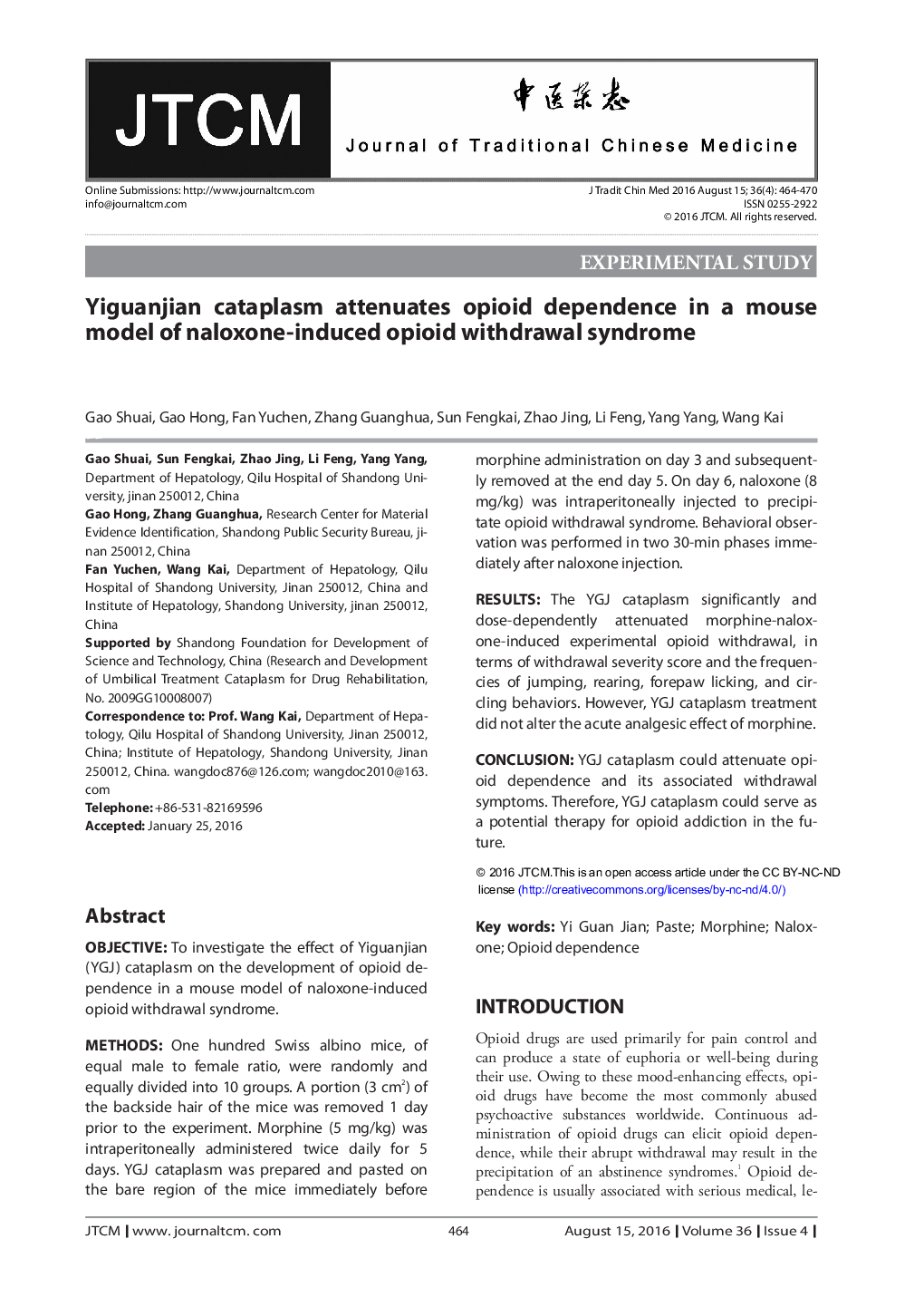| Article ID | Journal | Published Year | Pages | File Type |
|---|---|---|---|---|
| 4200908 | Journal of Traditional Chinese Medicine | 2016 | 7 Pages |
ObjectiveTo investigate the effect of Yiguanjian (YGJ) cataplasm on the development of opioid dependence in a mouse model of naloxone-induced opioid withdrawal syndrome.MethodsOne hundred Swiss albino mice, of equal male to female ratio, were randomly and equally divided into 10 groups. A portion (3 cm2) of the backside hair of the mice was removed 1 day prior to the experiment. Morphine (5 mg/kg) was intraperitoneally administered twice daily for 5 days. YGJ cataplasm was prepared and pasted on the bare region of the mice immediately before morphine administration on day 3 and subsequently removed at the end day 5. On day 6, naloxone (8 mg/kg) was intraperitoneally injected to precipitate opioid withdrawal syndrome. Behavioral observation was performed in two 30-min phases immediately after naloxone injection.ResultsThe YGJ cataplasm significantly and dose-dependently attenuated morphine-naloxone-induced experimental opioid withdrawal, in terms of withdrawal severity score and the frequencies of jumping, rearing, forepaw licking, and circling behaviors. However, YGJ cataplasm treatment did not alter the acute analgesic effect of morphine.ConclusionYGJ cataplasm could attenuate opioid dependence and its associated withdrawal symptoms. Therefore, YGJ cataplasm could serve as a potential therapy for opioid addiction in the future.
